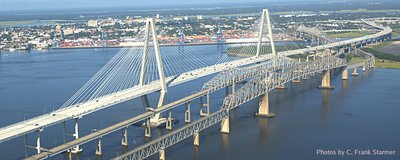The Bridge Blog
A dialog about our new bridge and these web pages
Overview.
Schools and universities are all about learning - and learning is mostlly
brain training. Learning is expedited by repetition and forgetting
is expedited by infrequent use of learned skills or information.
Tracking the building of the Ravenel Bridge and now tracking the
demolition of the Grace and Pearman Bridges bring
many questions to me and help me better understand the role Google
and the Internet play in
just-in-time learning. I enjoy chasing my curiosity and
want to identify ways to encourage younger learners to also enjoy curiosity
chasing and learning.
Many young learners do not understand the importance of repetition. More
important, while experienced learners understand the learning process
they often do not realize the destructive effects of the forgetting
process. Over the course of the
bridge project, I have access to only a few experts.
Rather than a liability, this has become an asset and pushed me to improve
my search skills with Google. Soon, I realized that answers
to questions encountered during my photo adventures were often
only a Google-search away. Gene Stead,
my first boss and I put these ideas together in a small essay:
(see
Restoring the Joy in Learning).
Google + Internet have become dependable extensions of my memory.
Insights I gain from you and this project will find their way into the
learning centers in our schools and universities.
Sun, 23 Jul 2006
July 23, 2006 Curious about double images in the pier base explosions
Many of you know that a lot of fun in my day is based on exploring data.
I have never understood why data analysis was so much fun - but as long as
I can remember, I have enjoyed looking at data, looking for common
denominators, looking for the unexpected and then trying to understand the
basis of a common denominator or explain an unexpected result.
Here are two frames from imploding the base of P-10 on July 12, 2006.
Note the double image of the wave at the base of the pier foundation and
smoke
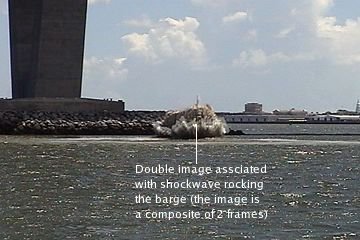
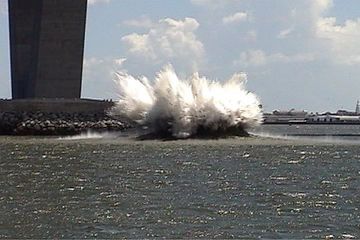
Thinking that was associated with an underwater shock wave colliding with the
barge used for video recording, I looked at the implosion of C-1 on July 14
and observed the same result - a double image
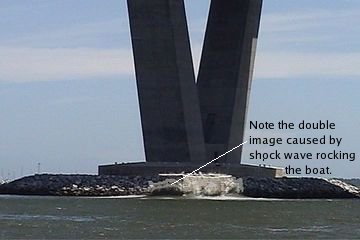
and then after several hundred milliseconds, the double image resolved into a
single image
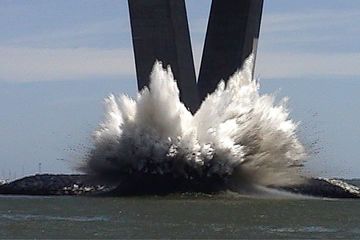
Testing whether this was associated with some sort of underwater shock wave,
I selected as a control, the above-water implosion of the C-2 pier. My
speculation was that this blast did not involve an underwater shock wave
whereas the above two blasts created an underwater shock wave
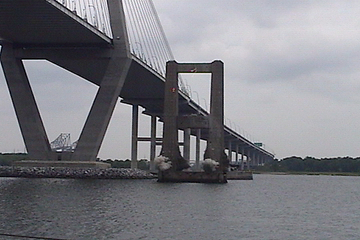

I could detect no double images with the C-2 pier implosion (above two images).
What I think is happening is that each video frame consists of two fields, one
of the even scan lines and one of the odd scan lines. When processed, the two
fields are combined which improves the resolution. One field is scanned
every 16.67 msec so I suspect that there was enough movement of the barge
between two consecutive frames to produce the double images.
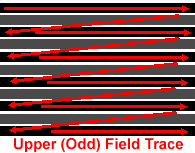
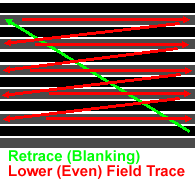
It would be interesting to superimpose the base of the rock island, behind
the pier foundations, and see if they appeared to shift up or down between
successive frames - paralleling the movement of the barge as the shock wave
passed.
posted at: 21:47 | path: | permanent link to this entry
Mon, 20 Mar 2006
March 20, 2006 Almost goodbye.
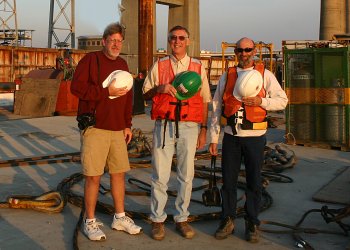
Gary Eaton,
Frank Starmer and Sparky Witte
The three muskateers of Charleston
construction photography
One cold morning in January I was watching some girders being erected on
Line 14 (the East Bay on ramp) and up drives a car and out pops a man, tripod,
camera, hard hat, safety vest - just like me. This was Gary Eaton who had
been tracking the bridge longer than I had. During the July transition from
building the Ravnel Bridge to unbuilding the Grace and Pearman Bridges,
I received some photos from Sparky Witte from Mt Pleasant. Suddenly, the
Internet provided two new friends for capturing the behind the scenes story of
the building and unbuilding processes. This started our small club of
Charleston Construction Photographers - who knows what will happen next?
While Gary is a real photographer (visit his
Studio web site),
Sparky and I were novices and eager to learn. I was very fortunate to
acquire additional Internet-initatied contacts that facilitated my learning.
Vince Streano from Seattle
provided insights about capturing construction photos while Stephen
SetteDucati from Boston and did the
Big Dig at NIght provided some insights for
night photography.
While the Internet is a useful communication tool, it is also a tool for
social interactions. I would never found Gary, Sparky, Vince or Stephen
without the Internet's ability to publish my building and unbuilding stories.
As I enter the last few day of acute loose end overload - preparing to depart
for Singapore and Duke on Thursady, I am confident that our interactions
will continue. Nugget, one of the iron work acrobats has some digital images
for our site, Sparky and Gary will continue and I suspect others will
contribute. What a wonderful time Ellen and I have had in Charleston and we
shall certainly miss it. We are keeping our home and we are keeping all the
warm friends that we have made - particularly Tom and Joan Bryce, our neighbors.
posted at: 10:20 | path: | permanent link to this entry
Sun, 05 Mar 2006
March 5, 2006: Frank's next chapter.
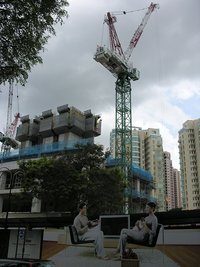 My professional life has centered around the fun of learning and my
professional home
has always been within universities. Each step of my academic career
has been fun and full of surprises - both scientific and cultural.
For 32 years I was a
faculty member at Duke in the
Departments of Medicine (Cardiology) and Computer Science. During this time
I was fortunate to stumble on the fun of international collaboration - in
France, Germany, Egypt, Spain, the USSR, starting in 1987 in Moscow at the
All Union
Center for Experimental and Clinical Cardiology. In 1991, I shifted my
collaboration to
Valentin
Krinsky's Autowave laboratory
in the Institute of Theoretical and Experimental
Biophysics in Pushchino, about 100 km south of Moscow. In parallel, I
extended my experiments with other cultures and taught for a year (1993-94) in
India (the Indian Institute
of Technology, Madras) and more recently (1997-1998) in
Greece (where I was a
Fulbright
Scholar at the University of Patras and most recently, developed a link
with the
University of Mostar, Bosnia in
2000 and in 2001.
My professional life has centered around the fun of learning and my
professional home
has always been within universities. Each step of my academic career
has been fun and full of surprises - both scientific and cultural.
For 32 years I was a
faculty member at Duke in the
Departments of Medicine (Cardiology) and Computer Science. During this time
I was fortunate to stumble on the fun of international collaboration - in
France, Germany, Egypt, Spain, the USSR, starting in 1987 in Moscow at the
All Union
Center for Experimental and Clinical Cardiology. In 1991, I shifted my
collaboration to
Valentin
Krinsky's Autowave laboratory
in the Institute of Theoretical and Experimental
Biophysics in Pushchino, about 100 km south of Moscow. In parallel, I
extended my experiments with other cultures and taught for a year (1993-94) in
India (the Indian Institute
of Technology, Madras) and more recently (1997-1998) in
Greece (where I was a
Fulbright
Scholar at the University of Patras and most recently, developed a link
with the
University of Mostar, Bosnia in
2000 and in 2001.
Now I am about to embark on another cultural adventure. The Government of
Singapore and Duke University have signed a memorandom of understanding to
build a new Graduate Medical School in Singapore. I have signed to be
part of the new faculty - led by Pat Casey in Singapore and Sandy
Williams at Duke. For
Ellen and myself, this is a like a trip back home - putting us within a few
hours flight time of our friends in South India, Bangladesh and Thailand. I
have signed a 3 year contract and will be the Associate Dean for Learning
Technologies - a continuation of my career as an engineer in the setting of
Medical Education. In addition, I suspect there will be a new Building
web site, tracking the construction of the Duke - GMS building.
The bridge building and unbuilding web sites will continue. With the members
of my former IT Lab at MUSC, we have established a server -
Butterfat that will act as an Internet
home base for these sites, and those of
web page to butterfat (
mine and my
IT Lab colleagues).
Sparky and the iron workers (Nugget and Speedy) have offered to continue
to photograph the progress with unbuilding the Grace and Pearman Bridges.
They will send me photos and the stories and I shall try to maintain the
continuity of the unbuilding process from Singapore. This will form
the core of another Frank Experiment - can we sustain our momentum
with participants located half way around the world from each
other. In addition, I shall
lean on my unbuilding friends at Jay Cashman and Testa - Ken Canty, Ponch
Billingsley, Mickey Rogers and Ken Tully at Advanced Blasting Services and the
families of Michael Hebb, Richie Bagan and Jack Foley.
You cannot imagine how much
new life and energy these folks have brought into the lives of Frank and
Ellen Starmer in Charleston.
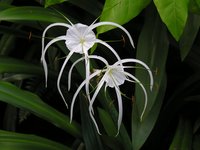 I am certain that there will be building and unbuilding opportunities in
Singapore and the surrounding area. For example, Oliver Forget (Freyssinet)
is now located in Bangkok and is building a new cable stay bridge there.
Marvin Tallent is in Pensacola and Peo Halvarsson is in the process of
moving back to Sweden. I shall continue to poke these friends and tell their
stories.
I am certain that there will be building and unbuilding opportunities in
Singapore and the surrounding area. For example, Oliver Forget (Freyssinet)
is now located in Bangkok and is building a new cable stay bridge there.
Marvin Tallent is in Pensacola and Peo Halvarsson is in the process of
moving back to Sweden. I shall continue to poke these friends and tell their
stories.
posted at: 15:15 | path: | permanent link to this entry
Thu, 09 Feb 2006
February 9 2006 2am: Another chapter about signature bridges
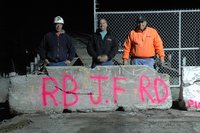 One day as I was following the building of the Ravenel Bridge, I stumbled on
a tablet on the top of the
west tower that was signed by many of the bridge workers. Hmm, I thought,
this is what a signature bridge is all about.
One day as I was following the building of the Ravenel Bridge, I stumbled on
a tablet on the top of the
west tower that was signed by many of the bridge workers. Hmm, I thought,
this is what a signature bridge is all about.
Today, though, I discovered another variant of Signature Bridges. Jackie
and Richie thought that tonight, they would unpour the last section of
Grace roadway at the Mt. Pleasant entrance. So off I went, about 8pm to
watch. At 2am Friday morning, it was complete - and - wow, what a new
meaning for signature bridge. Jack, Richie,Rich, Roy and myself - the only
witnesses to this event. Click
for the Grace signature bridge story. Huge thanks to Richie, Jackie, Rich
and Roy for the invitation!
posted at: 02:00 | path: | permanent link to this entry
Sun, 29 Jan 2006
January 29, 2006: Lessons learned from building the Ravenel Bridge.
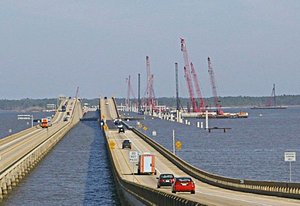 Several people have asked about how these pages got started. This is easy:
I started these web pages as a way for my grand kids to follow the
building of the Ravenel Bridge. But a number of people are curious about
my access to the building site. Several months ago, I as asked this question
during a Channel 5 TV interview and I simply replied, "I smile". It was
a serious answer.
Several people have asked about how these pages got started. This is easy:
I started these web pages as a way for my grand kids to follow the
building of the Ravenel Bridge. But a number of people are curious about
my access to the building site. Several months ago, I as asked this question
during a Channel 5 TV interview and I simply replied, "I smile". It was
a serious answer.
There are two ways to become involved in a project - the front door and
the back door. The front door is always obvious and usually opens to
a receptionist who directs you to someone. The back doors are usually
hidden, but with some practice, you can find the back doors. These doors
lead to the men and women that do the building and unbuilding.
When I started building the
Ravenel Bridge web pages, I simply took photos and wrote short photo
essays for the kids. I was not looking for either front doors or back doors.
But Bill Mankin of High Steel Structures in Lancaster Pa contacted me about
the web site - and without knowing it, opened a back door to High Steel
Structures. They fabricated the structural steel used to build the
main span. David Wertz, then with SCDOT opened doors. Somehow,
Olivier Forget of Freyssinet (in Paris) found the
web pages and opened another back door
and introduced me to the complexity and excitement of cable stay bridges. Then
Bill Mankin sent email stating that his team would be in Charleston to drill
and ream the splice plate used to join the east and west spans and maybe I would
like to watch. Not knowing what to do I phoned PBC and Marvin Tallent answered
the phone. I described Bill's request and soon Marvin introduced me to
Peo Halvarsson (superintendent of the Main Span) and Wade Watson, who directed
the entire project. Bill, David, Marvin, Peo and Olivier became my
professors of
bridge-ology and through their eyes, I saw and gained insights into the
complexity of their project. Because of them, my goal shifted from
a grand kids project to one of telling the unseen stories of bridge building.
The project ended - Wade returned to Tidewater Virginia, but Peo and Marvin
made their way to Pensacola Florida where they are working on rebuilding the
causeway (I believe, part of I-10). Our friendships have extended beyond
the completion of the Ravenel Bridge and a few days ago, Marvin sent me a
photo of their project (above) and announced that he had just purchased a new
digital SLR camera. Marvin is also a serious cyclist (of the bicycle variety -
whereas Wade was a serious cyclist of the Harley-Davidson variety). We are
keeping our eyes open for opportunituies to ride together over the Ravenel
Bridge. We did this several times before the bridge opened, but that did not
count. Somehow, riding together over the completed bridge will provide a
nice ending to the story of building the Ravenel Bridge.
When the Unbuilding project started - Ken Canty and Ponch Billingsly provided
back door access to the Pearman-Grace project. However, the web site,
I soon discovered, provided for them a way for their families in Boston
and other places to watch their husbands at work. Tina Hebb and
Kathy Billingsley were the brave souls that initially encouraged me to
engage not only
the workers here, but their families there. Their families as well as members
of other families (Hal, Joy, Shannon, Corey, Donna-Rae, Joshua) joined the
email discussions. Now they are my professors
along with Bob McCabe, Pio Monsini, Michael Hebb, Jackie Foley, Neal Meyers
and Richie Bagen. Through their eyes I have continue to learn more about
building and unbuilding - not just bridges but life. What a learning
experience these men and their families have brought to me. The lesson for
me is about sharing - first with my grand kids and then with the world.
Sharing via the Internet created social contacts that would not have
happened without the Internet. The Internet is our new learning tool and
for me, adds to the fun of the day.
posted at: 07:21 | path: | permanent link to this entry
